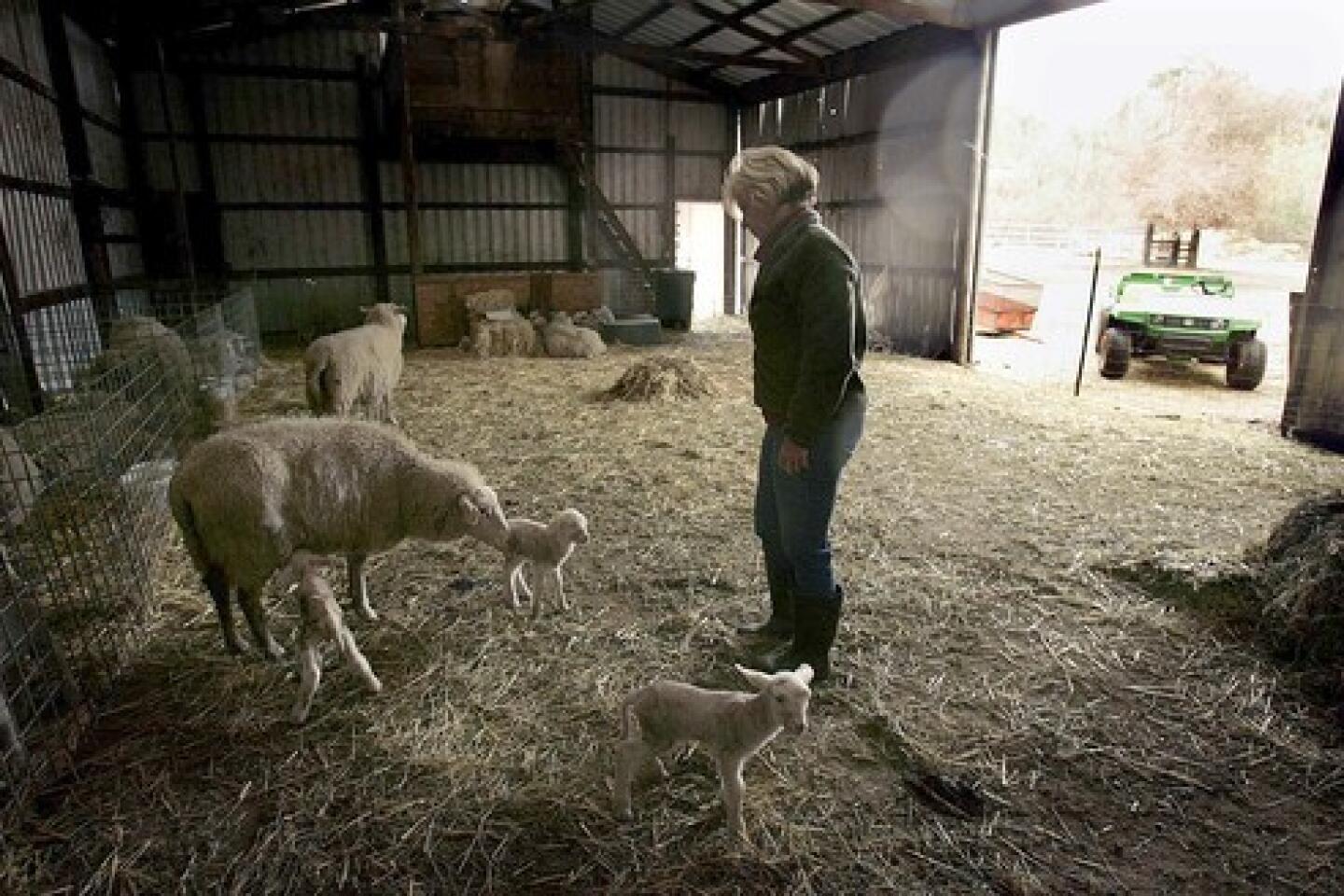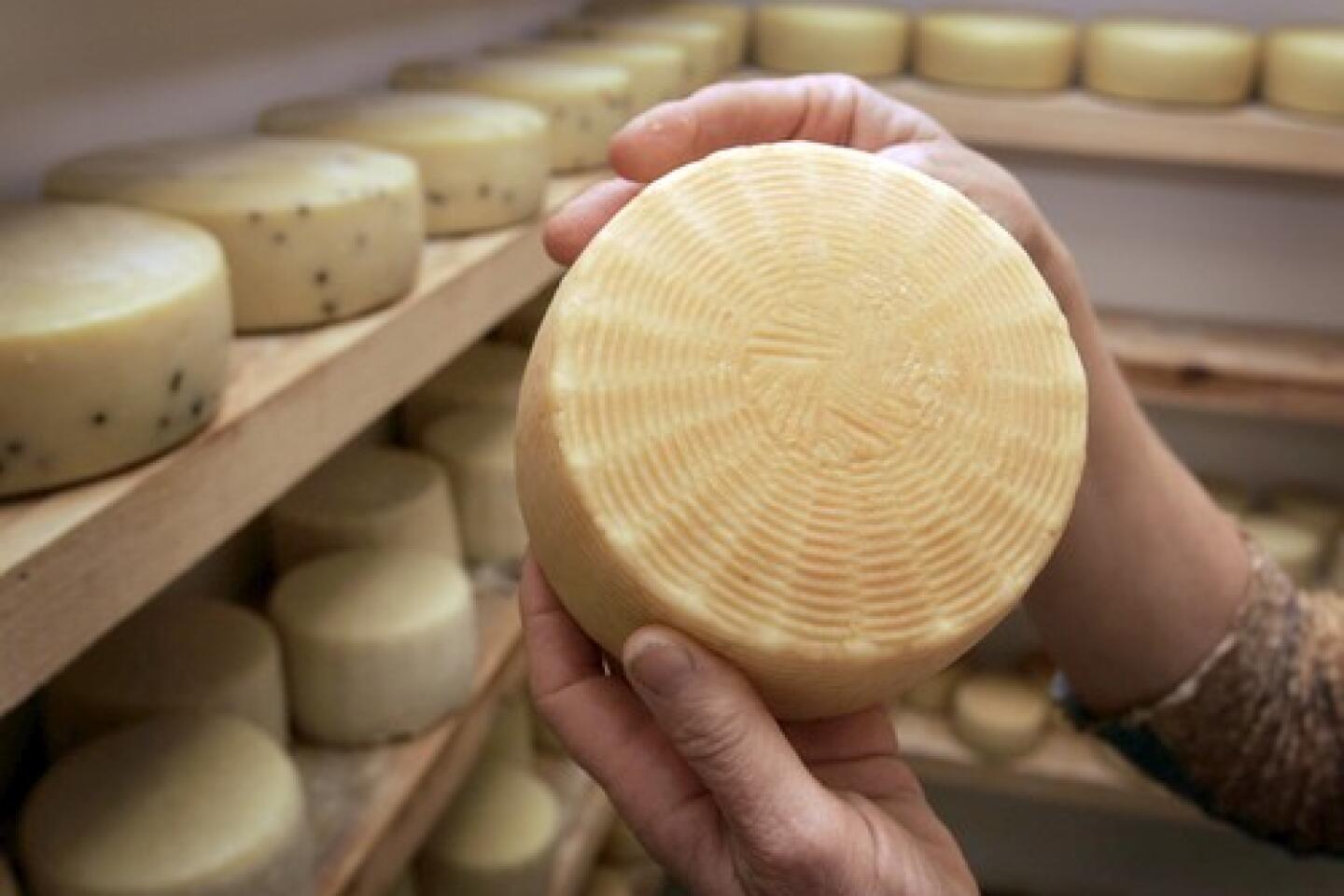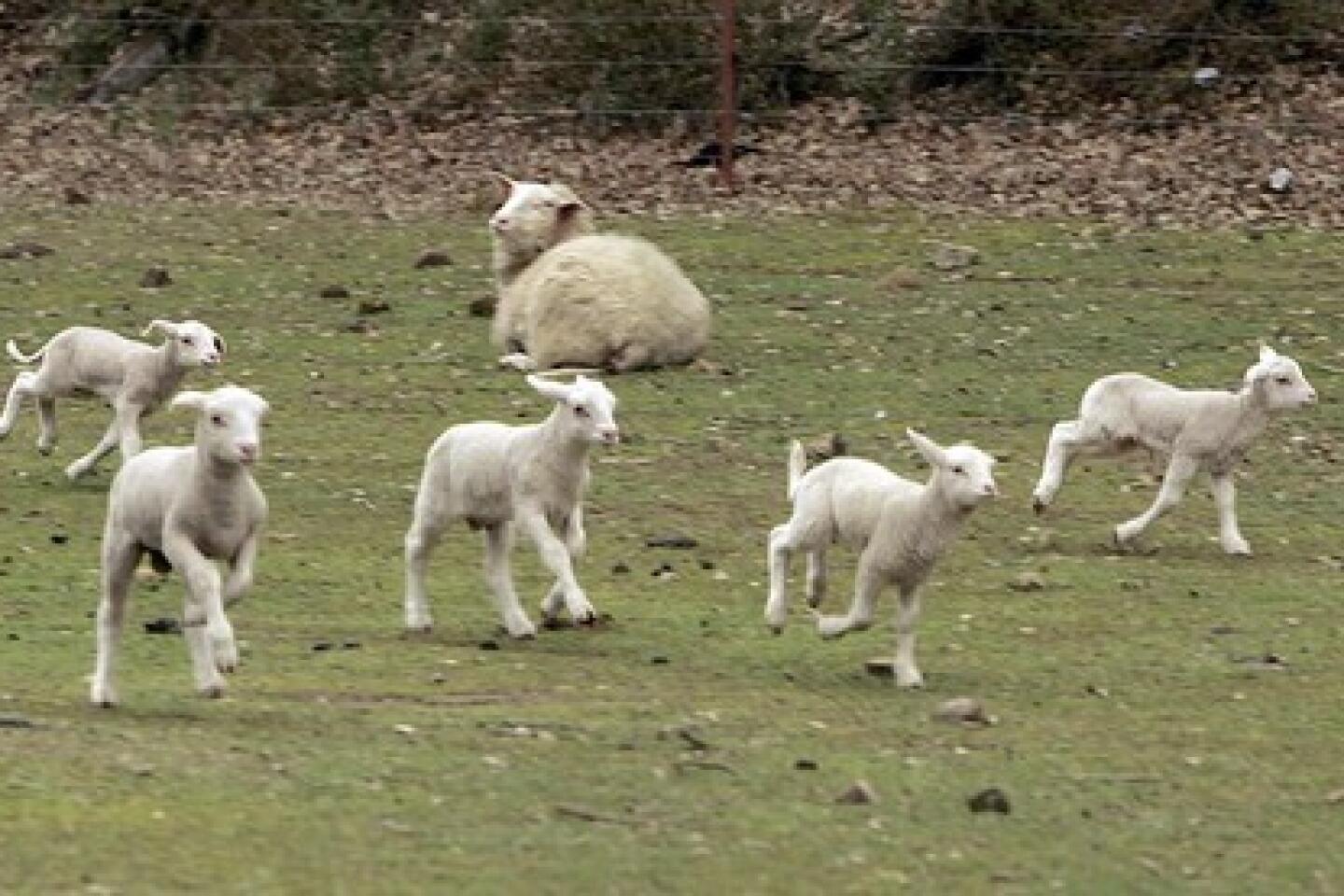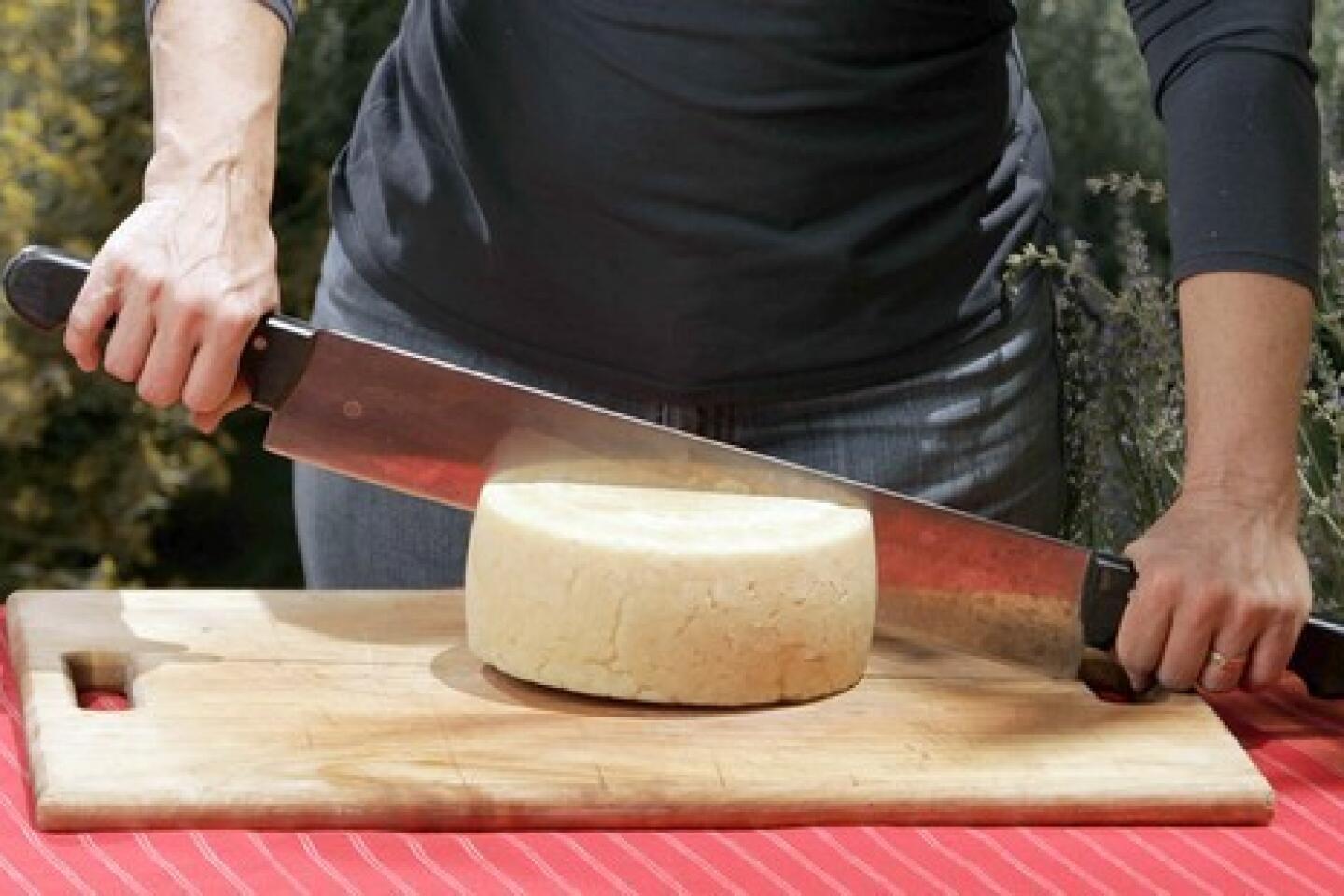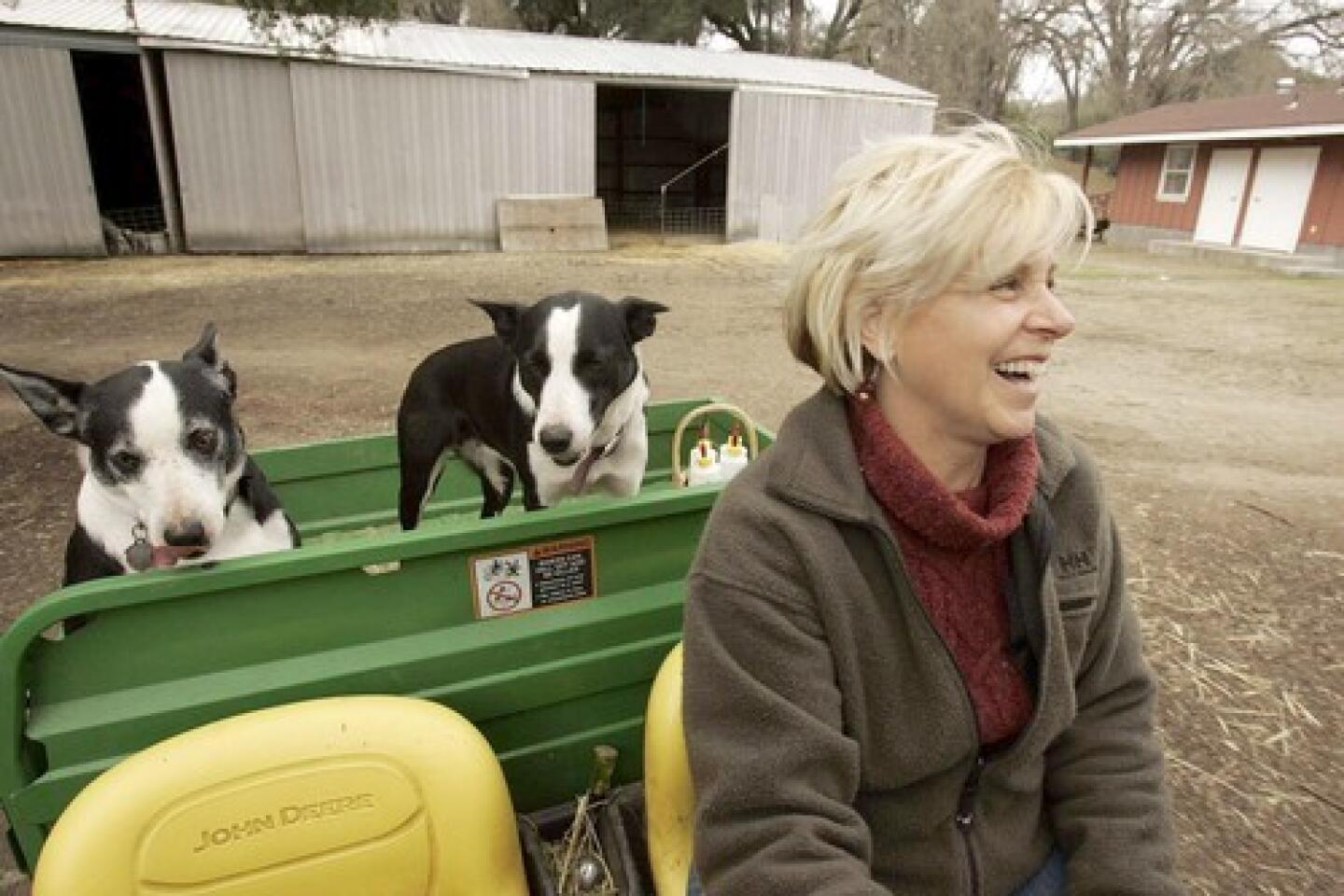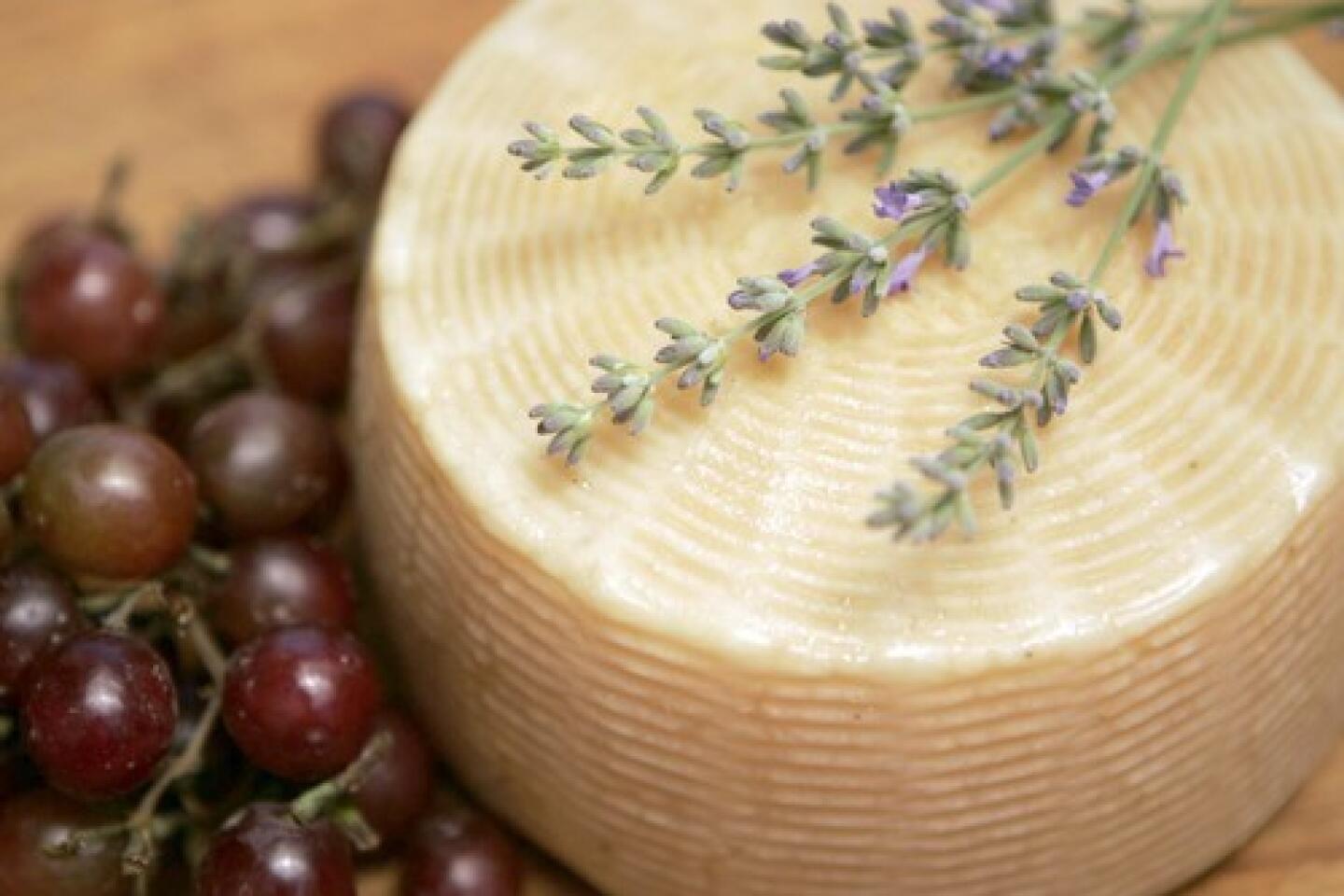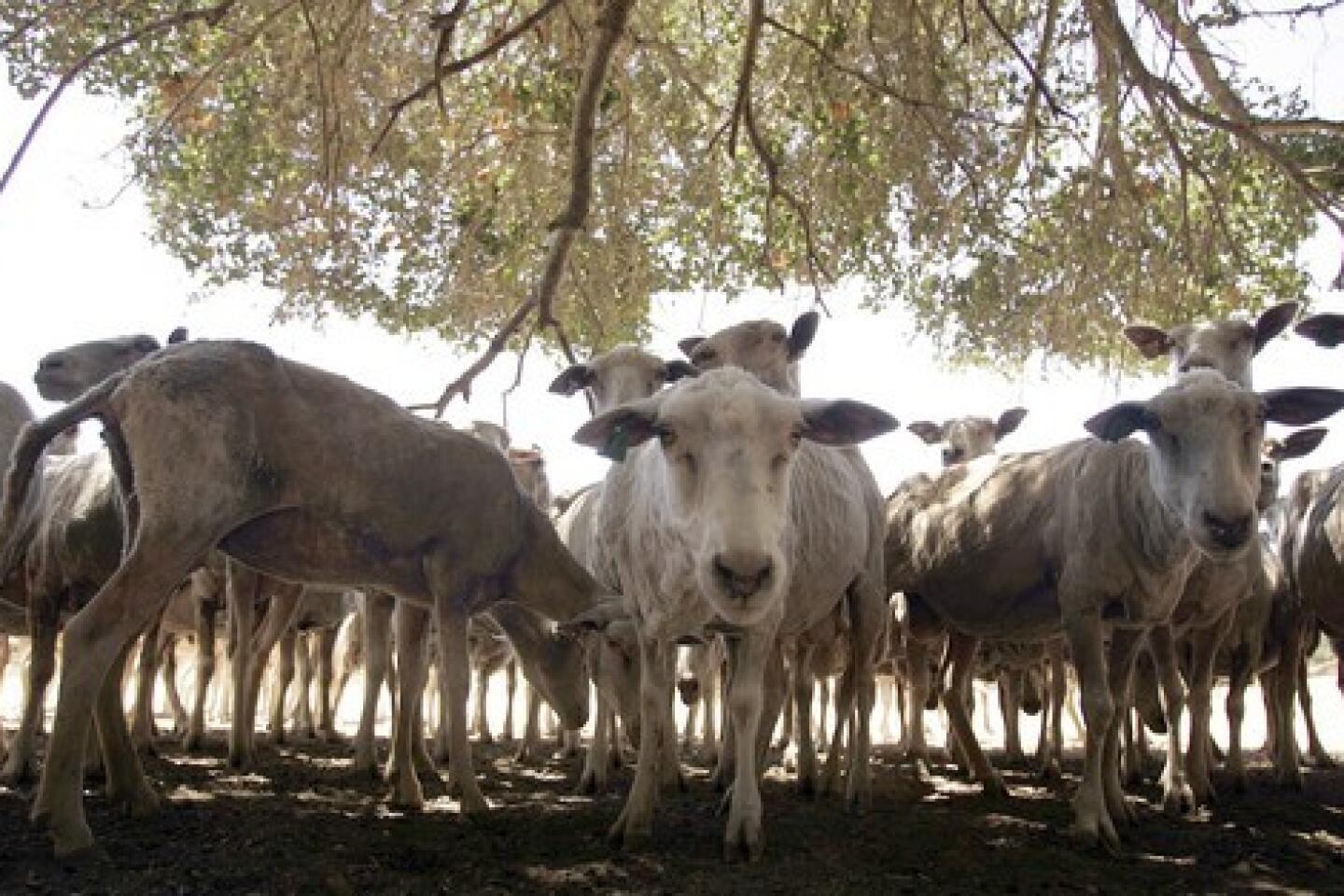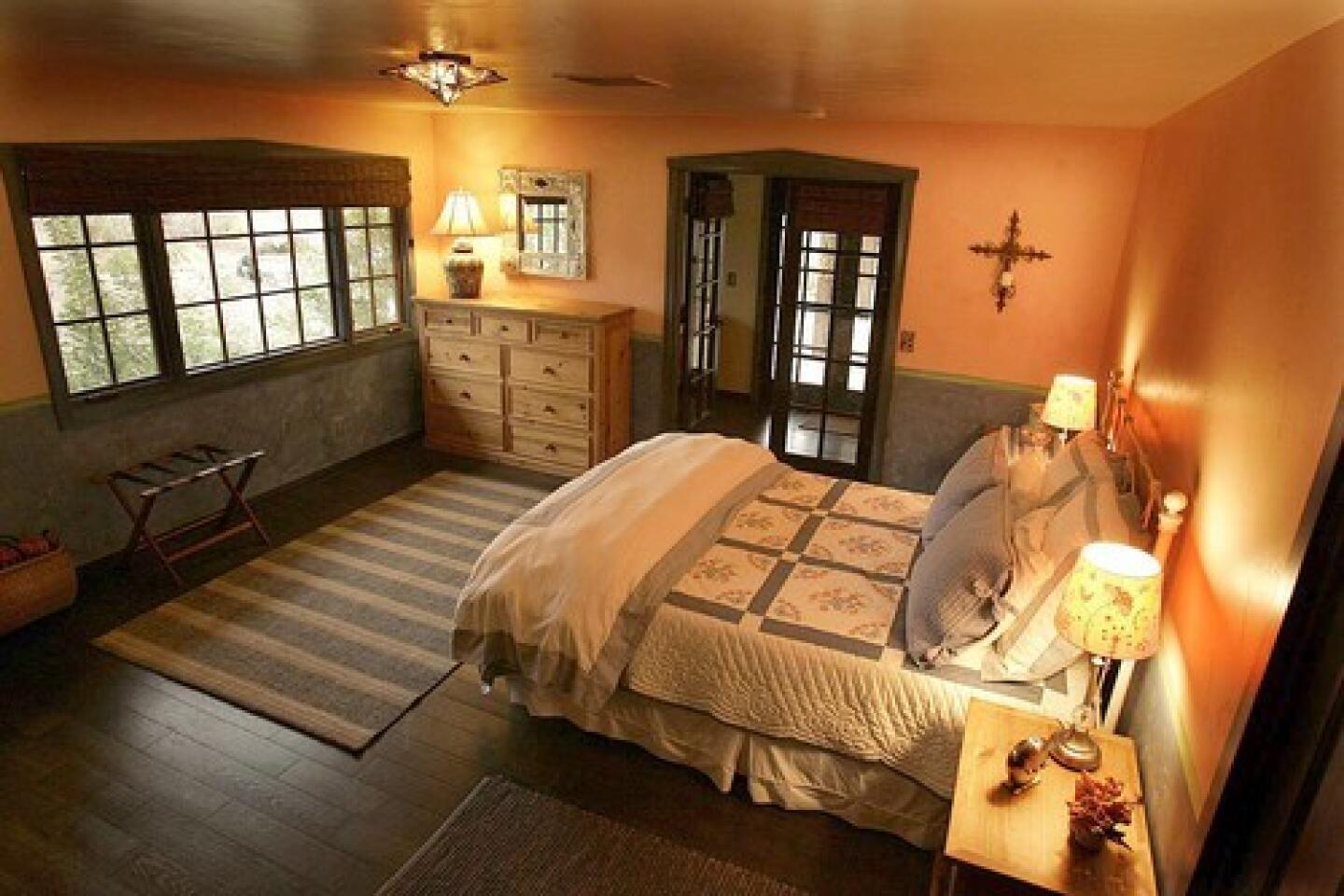A stay at cheese-makers’ ranch is a tasteful testament to local color.
- Share via
SAN LUIS OBISPO — We awoke to the bleating of sheep. My husband and I and our 23-month-old daughter, Evelyn, startled, got up and, bleary-eyed, made our way outside.
This vision greeted us: golden hills, graceful old oak trees and, beneath them, in the paddock across from our bedroom, scores of fuzzy white lambs, eyes blinking in the filtered morning sunshine.
As Evelyn stared in astonishment, the little creatures issued a cacophony of bahs and stared at us beseechingly.
Michael and I smiled at each other. What a great beginning to our vacation.
Then we turned our backs on the sheep and went inside to eat our breakfast. It was included in the price of our stay at the Rinconada Dairy, a sheep ranch and cheese-making operation tucked into the glorious hills northeast of San Luis Obispo.
The idea for the trip was born while we were stuck in traffic on the 110 Freeway. As our aggravation mounted and the precious afternoon ticked away, we fantasized about selling our house, quitting our jobs and chucking our hectic Southern California lives to make cheese for a living.
There was just one problem: Neither of us had ever made cheese -- except the horrible kind that turns up when milk is left out too long on a hot summer day.
Then we heard about the farm-stay run by Christine and Jim Maguire, who operate one of only two licensed sheep’s milk dairies in California and whose award-winning cheeses have been popping up in such high-end places as Campanile and the Cheese Store of Beverly Hills. Despite the steep price of their cheeses -- one retails for $25 a pound -- they invite paying guests to stay on their 52 acres for added income.
This was our first clue that making cheese might not put us on the fast track to riches. Bad news for our fantasy, but not our vacation.
Which turned out better than we thought. We learned a bit about making cheese. (It’s all about the mold, and we’re not going to try it at home any time soon.) Even better, we got to relax in bucolic luxury, watching others cook organic meals for us while our daughter got a sense of where her food comes from. Plus, the ranch was an easy drive to the Santa Ynez Valley and Paso Robles and minutes from dozens of excellent wineries.
We arrived at the Rinconada Dairy just behind the setting sun. A new moon hung low in the sky, and under its eerie light, a shocking sight greeted us: Christine Maguire on her front stoop, surrounded by more than two dozen cats.
Our daughter, who has complicated feelings about cats, looked terrified. My husband shot me an accusing glare: What, exactly, had I gotten us into?
But within moments, everyone was happy again. The cats scattered as we approached. (Only six were pets; the rest were feral residents.)
Maguire greeted us warmly and led us to our room. Actually, it was more a suite at one end of their Spanish-style house that held a bedroom, reading nook and bathroom with an elaborate shower that would not have been out of place in a Vegas honeymoon suite. Everything was spotless; no cats, pets or otherwise, were allowed in the guest quarters.
An eye-opener
Saturday morning after our encounter with the sheep, we found Christine and Jim in the gleaming country kitchen, cooking for us. Among the ingredients: eggs freshly laid by their hens and bacon from their pigs along with homemade granola. They hadn’t grown the fruit themselves, Christine said apologetically, pushing strawberries toward us, but they were from a nearby farmers market. Organic, of course.
We learned two lessons at breakfast. The first was that scrambled eggs newly gathered from healthy, coddled chickens are to grocery-store eggs what expensive Swiss chocolate is to plain old Hershey’s.
The second was more sobering. Running a ranch is hard work and possibly even a money-loser. And you have to get up insanely early.
Though it was Saturday, the Maguires had been up since 5:30 a.m. They had already milked more than 100 sheep. Now they were taking a break to feed us. Then they would head back to the morning’s other tasks.
For Jim, a lawyer who also works as San Luis Obispo County’s public defender, that meant a dizzying array of maintenance chores that kept him zipping up and down the pastures in his tractor, sipping from a giant thermos of coffee.
Christine, meanwhile, put on a poufy white hat -- for sanitary reasons, not for fashion -- and ventured into her workshop, where she makes three kinds of cheese. The best-known is Pozo Tomme, nutty and pecorino-esque, and aged for two months. Then there is La Panza Gold, styled after a Corsican farmhouse cheese. And finally, one she calls Chaparral, a mixture of sheep and goat milks.
Christine, who occasionally delivers impromptu speeches on the importance of locally grown food, said she had named her cheeses after landmarks close to her beloved ranch, not after the Spanish, French and Italian traditions they are based on.
My husband could not stop raving about the cheese, particularly the Pozo Tomme. He said he felt as though he could “taste our weekend.” Evelyn seemed to like it too, although she just said “cheese.”
One of the wonderful things about vacationing on a ranch, as opposed to owning one, is the ability to marvel at all the work that needs to be done -- and then get in your car and head off to have fun.
For us, that meant hitting the bustling farmers market in Templeton, a town about 25 miles north of the ranch, then visiting the wineries of the Santa Ynez Valley.
On the way back to the ranch, we stopped at the Range, a new restaurant in the picturesque town of Santa Margarita, about 10 miles from what we had come to think of as our ranch. Christine had sent us there, promising a gourmet dinner that we could feel virtuous about because it would be organic and support local farmers.
Alas, the one thing the Range could not do was prevent an overexcited 2-year-old from having a meltdown. But the wait staff was nice about it and packed our entrees to go. We ate them an hour later on the ranch, as our child slept peacefully.
Though we were only three hours north of Los Angeles, life on the ranch was so different it felt as though we had journeyed to another world.
Michael and I packed the car, feeling as though we wouldn’t soon forget the peace of the place. Even if it were illusory, even though it was only for a weekend, we felt more in tune with the land.
We were also moved by how hard farmers work to bring food to our tables. It changed the way we think about our food and how we shop. We now spend more time at farmers markets and are more willing, even happy, to pay local farmers for expensive tomatoes or fine vegetables. Not to mention fine cheese.
More to Read
Sign up for The Wild
We’ll help you find the best places to hike, bike and run, as well as the perfect silent spots for meditation and yoga.
You may occasionally receive promotional content from the Los Angeles Times.
